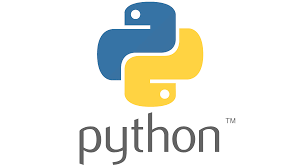
What is Python Tuple?
A Python Tuple is a group of items that are separated by commas. The indexing, nested objects, and repetition of a tuple are somewhat similar to those of a list, but unlike a list, a tuple is immutable.
Example:
tuple_1 = ("Python", "tuples", "immutable", "object")
tuple_2 = (23, 42, 12, 53, 64)
tuple_3 = "Python", "Tuples", "Ordered", "Collection"
print(tuple_1)
print(tuple_2)
print(tuple_3) Output:
('Python', 'tuples', 'immutable', 'object')
(23, 42, 12, 53, 64)
('Python', 'Tuples', 'Ordered', 'Collection')Empty Tuple:
Empty_tuple = ()
print(Empty_tuple)Output:
()Indexing in Tuples:
The index operator [] can access an object within a tuple, with indexing in the tuple beginning at 0. Tuples can also use backward indexing; for example, the last element can be accessed using the index -1, and the following elements can be accessed using the indexes -2, -3, and so on.
tuple_1 = ("Python", "tuples", "immutable", "object")
tuple_2 = (23, 42, 12, 53, 64)
tuple_3 = "Python", "Tuples", "Ordered", "Collection"
print(tuple_1[2])
print(tuple_2[1])
print(tuple_3[0])Output:
immutable
42
PythonAdding Elements to a Tuple:
The data contained in a tuple cannot be edited because tuples are immutable, but more data can certainly be added to a tuple. You can accomplish this by using the addition operator. For Instance,
tuple_2 = (23, 42, 12, 53, 64)
tuple_2 =tuple_2 + (100,)
print(tuple_2)
print ((1, 2, 5, 8) + (2, 5, 4))Output:
(23, 42, 12, 53, 64, 100)
(1, 2, 5, 8, 2, 5, 4)Deleting a Tuple:
A tuple’s components cannot be altered, as was previously mentioned. As a result, we are unable to get rid of or remove tuple components. However, a tuple can be completely deleted using the keyword del. For instance,
del (tuple_2)Slicing in Tuples:
Tuple slicing works the same as list slicing.
tuple_1 = ("Python", "Tuple", "Ordered", "Immutable", "Collection", "Objects")
print("Elements between indices 1 and 3: ", tuple_1[1:3])
print("Elements between indices 0 and -4: ", tuple_1[:-4])
print("Entire tuple: ", tuple_1[:]) Output:
Elements between indices 1 and 3: ('Tuple', 'Ordered')
Elements between indices 0 and -4: ('Python', 'Tuple')
Entire tuple: ('Python', 'Tuple', 'Ordered', 'Immutable', 'Collection', 'Objects')Repetition Tuples:
Multiplying a tuple by any integer x will simply create another tuple with all the elements from the first tuple being repeated x number of times.
tuple_2 = (23, 42, 12, 53, 64)
print(tuple_2*3)Output:
(23, 42, 12, 53, 64, 23, 42, 12, 53, 64, 23, 42, 12, 53, 64)
max() and min() function:
To find the maximum value in a tuple, we can use the max() function, while for finding the minimum value, min() function can be used.
tuple_2 = (23, 42, 12, 53, 64)
print(min(tuple_2))
print(max(tuple_2))Output:
12
64Note: also read about Python Dictionary Methods
Follow Me
Please follow me to read my latest post on programming and technology if you like my post.
https://www.instagram.com/coderz.py/
https://www.facebook.com/coderz.py
Staying up to the mark is what defines me. Hi all! I’m Rabecca Fatima a keen learner, great enthusiast, ready to take new challenges as stepping stones towards flying colors.
Leave a Comment
You must be logged in to post a comment.